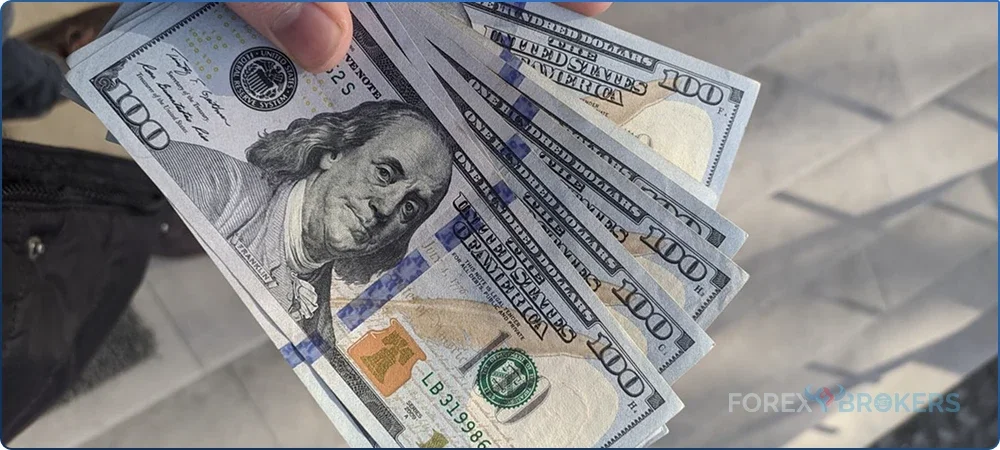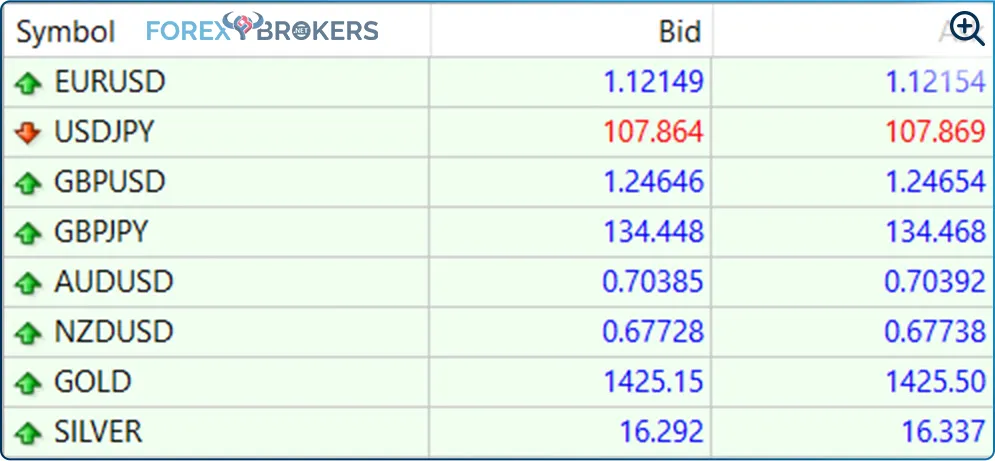LISTEN TO THIS ARTICLE:
America, the land of the free, is home to the most important currency in the world today: the U.S. dollar. Its history marks crucial moments in humankind’s evolution as it sits at the heart of all relevant events in the world.
Undoubtedly, the USD is the pillar of the forex dashboard as we know it today. One can go even further, stating that it represents the pillar of the entire financial system.
As a fiat currency (paper currency), it has no rival. It acts as a world reserve currency as sovereign nations around the world build their foreign reserves in USD.
Therefore, the monetary policy on the USD, set by the Federal Reserve of the United States (the Fed), affects all countries, not only America. Debt around the world is mostly built in USD.
For this reason, the Fed acts not only as America’s central bank but also as the world’s central bank if such an institution existed. It makes the role of the USD critical to the health of the financial system as we know it. Hence, we dedicate an entire article to the fiat currency that shaped the world: the USD.
This article reveals the role of the USD. From the 1944 Bretton Woods press conference to the International Monetary Fund (IMF) creation to today’s trade negotiations around the world, it is all about money and power. And, when it comes to money, it is about the USD.

Bretton Woods Legacy
In the summer of 1944, the world’s leaders gathered in Bretton Woods, United States. The stakes were high: the world needed a new financial order.
John Maynard Keynes and Harry Dexter White, representing the United Kingdom and the United States, led the economic negotiations. After much argument and technical details, the new financial system born at Bretton Woods depended on the USD.
It fixed the USD value to gold; America would exchange $35 for an ounce of gold and the other way around. Basically, as the Americans put it, the USD was as good as gold.
We won’t go into the details of the Bretton Woods system and legacy. What followed in the years to come is a classic story of dominance, fight for power, devaluation, and inevitably, the collapse of one of the best financial systems known to humankind.
Between 1948 and the 1970s, when the Bretton Woods system functioned, the world enjoyed an unparalleled period of progress and economic boom. Global GDP (gross domestic product) expanded at rates close to 3 percent, no recessions occurred, and no banking crises existed.
To the surprise of many, social welfare also improved. Life expectancy climbed to never-before-seen levels, household income rose, and human innovation boomed. This was the world’s economic shape following the Bretton Woods conference in 1944.
Yet it was not enough. As good things come to an end, the Bretton Woods system failed to account for human greed and the need for power.
The system eventually collapsed in the 1970s during Nixon’s administration. But the causes that led to its demise didn’t appear overnight.
How the Fixed Exchange Rates Disappeared
Nations around the world began devaluing their currencies, obviously with the intent of making their exports more competitive.
The Americans couldn’t do that; the gold standard, or the Bretton Woods agreement, guaranteed $35 for an ounce of gold. The United States had its hands tight and, for the moment, won’t do anything.
In comparison, the United Kingdom devalued the pound, not once, but twice. In two massive devaluation rounds in 1949 and 1967, the United Kingdom intentionally devalued the British pound. It flirted with disaster in a desperate attempt to pay piling debts to Egypt and India. The public began losing its trust in the old-fashioned British pound.
In an ironical twist of faith, the current Brexit situation, with the United Kingdom leaving the European Union, resembles what happened in the years following Bretton Woods. In 1957, the Treaty of Rome created the European Community, which sits at the heart of today’s European Union. Britain was reluctant to join up.
Other countries like Germany and Japan let their currencies lose value. The plan to raise their export share worked.
The end of the 1950s saw the United States no longer have the dominant exporting role. Germany soon took over.
As the world relied on USD as a benchmark of value-keeping (after all, the USD’s value was pegged to gold), the Triffin dilemma pointed out the flaws of the Bretton Woods system. An economist, Triffin stated that the limitless demand for dollars comes at a cost because, eventually, the United States would find it impossible to convert them into gold at $35 an ounce.

Triffin was right. The Vietnam War and some failed domestic policies led the United States to massive debt levels. Soon, liabilities exceeded the amount of gold held in Fort Knox.
- The Nixon Shock
In 1969, Richard Nixon took over the presidency of the United States. It marked the end of the Bretton Woods system as he is known in history books as delivering the Nixon shock.
That is, of course, the demise of the Bretton Woods system. On a Sunday night, on television, Richard Nixon announced that the United States would end the USD convertibility to gold. Or, as some economists put it, the “gold window” closed.
It was a courageous and desperate move. It took all other countries by surprise as no one had an idea about the U.S. intentions before the announcement.
The USD fell from $35 to $38 an ounce of gold. In the next round, in 1973, it fell from $38 to $42.22. As the fixed exchange rates died, a new system was born.
To the surprise of many, the pioneer of the free-floating system wasn’t the United States but Canada. With tremendous success, Canada temporarily unpegged the Canadian dollar, letting the currency become fully convertible at the end of 1951.
With a precedent in place, countries around the world announced they’d sever the link to the USD. As such, the last group of countries from Europe did that in 1973.
A new system, like never before, was born based on trust rather than gold. Free-floating currencies led to the birth of the foreign exchange market.
Foreign Exchange Up to the Internet Era
Exchanging currencies to make a profit seems like a piece of cake today. Online trading made it simple for anyone with an Internet connection to participate in foreign exchange from the comfort of their home.
It wasn’t like that in the ’70s. After the Bretton Woods collapse gave birth to a new, free-floating monetary system, speculators noticed an opportunity.
Trading on the foreign exchange market differed significantly from the stock market. Technical analysis wasn’t in its incipient phases, as most trading theories already existed for decades.
However, they were developed in the stock market, mostly in the United States. But the foreign exchange was different.
As such, little or no technical trades existed on the forex market before the computers and Internet era. Therefore, all trades were fundamental, looking to speculate on the macroeconomic differences between different countries and, as a result, on their currency’s mispricing.
The USD dominant role in the world continued. While countries severed the link to the dollar, they continued to keep the foreign reserves in the American currency. After all, if America collapses, the world collapses—that was the thinking back in the day, still valid to some extent nowadays.
A symbol of capitalism, the USD survived its major crisis ever. With oil discovery in the Middle East, the Kissinger deal sealed the place of the USD at the heart of the current financial system to this day. Offering military protection in the region, the United States got in return the promise that all oil from the region would be sold in USD and the excess amounts would buy U.S. debt, notably treasuries.
The Personal Computer and the Internet
Just like that, with the strike of a deal, the USD was back on the table. As oil became “the new gold,” speculation on its price was tight to speculation on the USD.
Gold suddenly lost its role as the only known form of money that survived for millenniums. Suddenly, the world’s insatiable thirst for USD cemented its position as the pillar of the current financial system.
Trading on the foreign exchange was slow—phone calls over the ocean, huge spreads and markups, and only a few giant players to deal with.
But the oil boom led to substantial progress in the world. Economic growth led to innovations, broken technological barriers, and the birth of an iconic product that shaped the world again: the PC (personal computer).
The PC had a significant impact on technical analysis. Technical studies advanced, new indicators appeared (e.g., RSI [relative strength index], CCI [commodity channel index]), and charting became easier overall.
We can say without fail that the Internet and online trading changed foreign exchange and trading forever. Up to the point when online trading started, only a few investment banks and large institutional players speculated on the market.
But online trading changed that, and with the help of brokerage houses, retail traders managed to attract more and more traders to the market. As such, in a way never seen before, the “masses” had access to the interbank market.
This is an important step in the USD’s perception because up to that point, only news and macroeconomics offered an idea about currency moves. Few people in the world, other than trading professionals, knew what news meant for currencies or that one can exchange currencies for profit.

Introducing the Forex Dashboard
Brokers were the first to notice the importance of the Internet to trading. As such, they immediately offered solutions to intermediate access to the forex market.
Nowadays, retail forex trading still accounts for a small part of the overall turnover. However, that small part comprises millions of trading accounts, maybe more, with a person and personality behind them. Therefore, having access to the market and seeing its fluctuations changed the perspective of millions and millions of people around the world. Simple persons, not trading professionals.
The perception of the USD changed too. How come? It is impossible not to see the importance of the USD in the overall financial system when looking at the forex dashboard.
In 2019, the so-called forex dashboard differed from the incipient versions. As mentioned in one of the previous articles on this Trading Academy, a forex broker now offers more than currency trading.
But at the start, in the late 1990s and early 2000s, the dashboard contained currency pairs only, and the first thing to strike the eye was the USD.
The dashboard represents the bread and butter for every trader. It shows the currency pairs that the broker offers, the conditions, and overall, the entire range of products to trade.
The modern version of a forex dashboard has different names. For instance, the MetaTrader4 or MT4 platform refers to it as the Market Watch.

For every currency pair or product offered to trade, two prices exist: bid and ask. Buying always takes place from the ask price, while selling happens from the bid.
The difference between the two, the spread, is a fee paid to the broker. The spread is responsible for differentiating between forex brokers: the lower the spread, the more competitive the broker is.
Major and Cross Pairs
Only looking at the forex dashboard allows traders to see the USD’s role. Effectively, it splits the dashboard into two main categories: major and cross pairs.
Before discussing their correlation, let’s comment some more on the spreads. The first FX brokers had only four-digit quotations for a pair like, say, the EURUSD, and the spread between the bid and the ask price often exceeded three full pip points.
Nowadays, as the table above shows, the five-digit quote on the pair is responsible for a very tight spread: less than one pip point on the EURUSD.
Other pairs have different spread conditions. We can use the USD to distinguish between major and cross pairs.
A major pair is one that has the USD in its componence; EURUSD, GBPUSD, or USDCAD are such examples. On the other hand, if the USD misses from a currency pair, that’s a cross; EURGBP, GBPCAD, and NZDJPY are crosses.
We can, therefore, use the USD to split the forex dashboard into two main categories—well, at least when it comes to the currency pairs part of the forex dashboard: majors (pairs with USD) and crosses (pairs without USD).
Other products of the forex dashboard depend on the USD’s move, even though some brokers list them differently. For instance, a quick reference at the forex dashboard shows the gold and silver markets listed, with their respective bid and ask prices.
But the prices are in USD. The “nickname” for gold and silver are XAUUSD and XAGUSD, respectively. In other words, the gold and silver markets on most brokers appear in USD terms.
What to Consider When Trading Major Pairs
Major pairs reflect the USD’s importance. Flows in and out of the USD pairs influence the price action on other pairs heavily, especially on crosses.
Therefore, everything that moves the USD is relevant for major pairs. Some of the things to consider are as follows:
- United States economic news
- NFP – nonfarm payrolls
- Unemployment rate
- GDP – gross domestic product
- CPI – consumer price index
- ISM manufacturing and non-manufacturing
- Housing data
- Building permits
- Pending home sales
- Retail sales
- AHW – average hourly pages
- Geopolitical shifts
- Because the USD is the world’s reserve currency, many traders and sovereign nations see it as a safe haven. Therefore, when geopolitical changes result in uncertainty on the international level, the flows start pouring into the USD despite what the Fed actions are. For instance, in the aftermath of the 2008 financial crisis, the Fed cut the rates to zero, but the USD kept rising because of its safe-haven status.

Major pairs typically have tighter spreads. Brokers always use the EURUSD major as an example of how tight the spreads offered are.
Nonetheless, almost all major pairs have similar spreads, though slightly higher. For instance, AUDUSD, GBPUSD, USDCHF, and USDJPY all have tighter spreads that cross pairs.
Another thing to consider when trading major pairs is the federal fund’s rate in the United States. The level influences the swap paid at the end of the trading day for positions kept open, thus affecting the profitability of the trading account.
- Correlations Between Major Pairs
Correlations between different currency pairs have a direct influence on the profitability too. But they also provide opportunities for the trader who understands how correlations work.
The USD is obviously the starting point. When the USD is on the move, all USD pairs (i.e., majors) will move too. However, because of the other currency’s strengths or weaknesses, the majors will move in different percentages but in the same direction.
Having said that, imagine the USD reacts strongly to upbeat economic data. The major pairs will be the first to respond. Depending on the USD positioning on the pair, some will rise (e.g., USDJPY, USDCAD, and USDCHF), while others will fall (e.g., EURUSD, AUDUSD, and GBPUSD).
It means that some majors have a direct correlation (i.e. move in the same direction), while others have an indirect one (i.e., move in opposite directions). That’s a very special relationship to understand when trading the currency market.
Correlations help structure sophisticated strategies. After funding a trading account, the next decision is what to buy or sell and how much. If traders speculate on the future value of the USD, every major pair is subject to trade.
But trading them all based on the USD’s reaction only increases the exposure on the same market direction. For example, buying the EURUSD and selling the USDCAD based on expectation of a weaker USD is like buying two positions on the EURUSD pair or selling two positions on the USDCAD.
Another aspect to consider about correlations is their role in hedging a trading account. Either full or partial, hedging (buying or selling at the same time currency pair or correlated ones) helps traders make the most of all the market moves.
- Using Correlations to Hedge a Trading Account
Hedging mostly belongs to the money management system used in a strategy. As we’ve done so far in this trading academy, we introduce new concepts, explain their basics, and later expand them in greater detail.
Full hedging refers to buying and selling the same currency pair or financial asset using the same volume. Buying one lot EURUSD and selling one lot EURUSD at the same time is full hedging.
But the definition of full hedging has a flaw. Unless closing the positions until they roll to the next day, full hedging has swaps that affect the bottom line.
Using the example from above, if the volume differs, that’s partial hedging. However, partial hedging also works when trading correlated major pairs.
Here’s an example. Let’s say the trader buys one lot EURUSD on expectations USD will fall and at the same time sells half a lot of AUDUSD. By trading directed correlated pairs in opposite directions, the trader uses different strategies on the same trading account; one trade may come from a strategy on the monthly chart and the other one on a strategy on the hourly chart, and the trader reduces the risk (exposure) via correlations.
In some market jurisdictions (e.g., the United States), traders can’t hedge positions on the same account. However, trading correlated major pairs works in the same way as hedging the trading account using the same pair, thus solving the hedging restrictions imposed by the regulators.
- Risk-off and Risk-on
The USD is responsible for one of the most critical correlated moves in financial markets: risk sentiment. Risk-off and risk-on market moves appear when the USD shifts either up or down, and they involve not only currency pairs but also other financial markets like the equity markets.
Investors and traders always look for products offering a higher yield. Typically, higher yields come with greater risk, while products offering lower returns are perceived to have little or no risk at all.
For instance, buying a 10-year U.S. Treasury pays less than buying a junk bond for the same period. But the risk is higher owning a junk bond than owning a risk-free asset like the 10-year.
Institutional market players perceive risk at different levels than retail traders. Therefore, retail traders speculate on the market moves created by the institutional players.
Let’s use the typical financial markets’ example to explain this phenomenon. Obviously, it all starts with the monetary policy.
When the Fed cuts the interest rate level, it starts an easing cycle. That translates into USD moving lower.
But the Fed’s move has deeper implications, especially on the medium to long-term market expectations. The returns for owning bonds decrease, and investors start looking for riskier assets.
Equities are such assets. Funds pouring into equities will trigger the indexes moving higher.
If DJIA moves higher, the USDJPY moves higher too. Investors borrow in JPY to buy USD used to pay for the equities. On the FX market, the correlations translate into higher EURUSD, AUDUSD, and GBPUSD and lower USDCAD.
All the market reactions explained above happen in a risk-on environment. The major pairs and the USD have a crucial role.
The opposite market reactions appear in a risk-off situation; DJIA moves lower and triggers lower USDJPY and higher USDCAD, while EURUSD, AUDUSD, and GBPUSD fall too.
- Overtrading
One of the causes responsible for losing a trading account early is overtrading. Retail traders suffer from overtrading, and one of the reasons is the lack of understanding of how the USD and major pairs move in correlation.
We already explained earlier in this article that overtrading is buying or selling directly correlated pairs that result in increasing the exposure in the same market direction. What’s the solution to it?
Firstly, decide which one of the major pairs have the potential to travel the furthest. For instance, if the USD is about to strengthen, but the EUR is weak too due to tensions in the eurozone and poor European economic data, then the chances are that the EURUSD pair will fall more than other majors.
Secondly, avoid opening trades on correlated pairs at the same time. Instead, wait a bit for better prices if you insist on trading in the same direction.
Other ways to avoid overtrading exist, and we’ll mention them when discussing money management in future articles.
What to Consider When Trading Cross Pairs
Cross pairs don’t have the USD presence. They depend, though, on the distances traveled by the two major pairs they represent.
For instance, if the EURUSD and USDJPY both rise 1 percent, the net effect on the EURJPY pair is zero. The cross remains flat, offering no trading opportunities.
If the two majors travel different distances, the cross reflects the difference. Therefore, it offers trading opportunities by merely interpreting what the two majors do.
When compared with majors, cross pairs have wider spreads. For instance, the AUDNZD cross always has wider spreads than any other major.
Also, cross pairs have little liquidity. This does not affect the average retail trader, but some individual traders do swing a big line.
It means that when trading a hundred lots on a cross pair, slippage appears due to lack of liquidity. A solution to this is to trade smaller lots multiple times until the broker executes all the volume. For instance, opening ten trades of ten lots each solves the slippage issue when trading one hundred lots on a cross pair.
- Diversification Benefit
The USD’s role in the forex dashboard is the source of diversification strategies. Typically, diversification protects a trading account from large swings, avoiding drawdowns.
Because there’s a thin line between over-diversifying the trading account and using diversification to protect it, the USD is the tool to use to benefit from it.
For instance, if the trader has an exposure higher than a few percentages on the USD pairs, the next trade ideally should not contain the USD. Thus, the account is diversified using the majors and crosses relationship.
The Correlation between Major and Cross Currency Pairs
One can say that the forex dashboard is formed of currency pairs grouped in three: two majors and one cross. Understanding their relationship is key to understanding today’s currency market.
As an example, let’s use the EURJPY cross pair. A popular pair among retail traders, it reflects the economic changes in the eurozone and Japan. Also, it reflects the monetary policy differences between the ECB (European Central Bank) and BOJ (Bank of Japan).
For the EURJPY cross, the most relevant thing is how the two majors move: the USDJPY and the EURUSD. As explained earlier, if the USDJPY falls 1 percent and the EURUSD rises 1 percent, the EURJPY remains flat. Only differences move the cross.
- Trading without Interpreting a Chart Pattern
The relationship between the three currency pairs opens the gates to various trading opportunities, such as trading a currency pair without even looking at a chart in any time frame.
Let’s say you’re bullish on the EURUSD. For whatever the reason, you expect the pair to react on a move, say, below 1.10. Therefore, you’re a buyer by the time the pair dips below 1.10.
But at the same time, you like the USDJPY as the pair broke out of an ascending triangle on the weekly time frame. What is the best pair to trade? The answer is the cross, the EURJPY.
The strength in the EURUSD pushes the cross higher. At the same time, the USDJPY resilience to drop and bullishness given by the technical pattern will cause the cross pair to move even higher.

The USD: Past, Present, and Future
The USD is a relatively new currency. Considering the United States’ history, other currencies existed way before the USD.
But as it turned out, America took over the world economically. In time, it caught up with the rest of the world, and for decades now, it has the largest economy in the world.
The USD reflects the United States’ hegemony and influence in the world. After the Bretton Woods system collapsed, the USD’s global influence spread even more.
In some countries, the local monetary policy is pegged to the USD. Because governments and central banks were unable to provide price stability, the solution was to follow on the Fed’s steps and peg the local currency to the USD. Therefore, the USD, and no other currency, is used in such currency regimes.
In some other countries where the population doesn’t trust the local currency, the USD acts as a parallel currency that keeps its value. For instance, one hundred dollars in today’s Venezuela buys you many things and is accepted by people as a store of value and a medium of exchange.
As a rule of thumb, where people do not trust governments and currencies anymore, they turn to something of stronger value. That’s the USD, as it is accepted not only in the United States but also throughout Latin America, Asia, and even in some African countries.
Therefore, we can call the USD the global currency in the twenty-first century so far. Will it be able to keep its dominant role in the future?
Conclusion
Voices call for the SDR (special drawing rights [the IMF currency]) to become the only currency to use. Even if that will be the case at some point in the future, it is worth remembering that the USD is a big part of SDR. Hence, its sphere of influence won’t change any time soon.
Every financial product offered by a brokerage house today depends on the USD and the monetary policy set by the Federal Reserve of the United States.
It means that what happens in the United States is vital in any part of the world. Because we live in an interconnected global environment with businesses operating on all continents, the USD’s hegemony is likely to continue.
Challenges existed and continue to appear. For instance, China and Russia signed deals to trade oil and other commodities in Chinese yuan and Russian ruble.
However, as mentioned in previous articles in this Trading Academy, it is all about trust. Governments have the power to change regulations, sign new economic deals, etc.
But if the trust in the currency isn’t there, everything will fail. You can’t have governments without the population’s trust. If you do, then there’s one other currency used in parallel with the official one. Today, that’s the USD, and chances are it will keep its role in the foreseeable future.
For traders, the USD creates opportunities to speculate. Let’s remember that speculators don’t believe in the concept of market efficiency, actively betting on market moves.
Because the USD creates those market moves, the speculators’ success depends on understanding the USD’s role in the current financial system.
